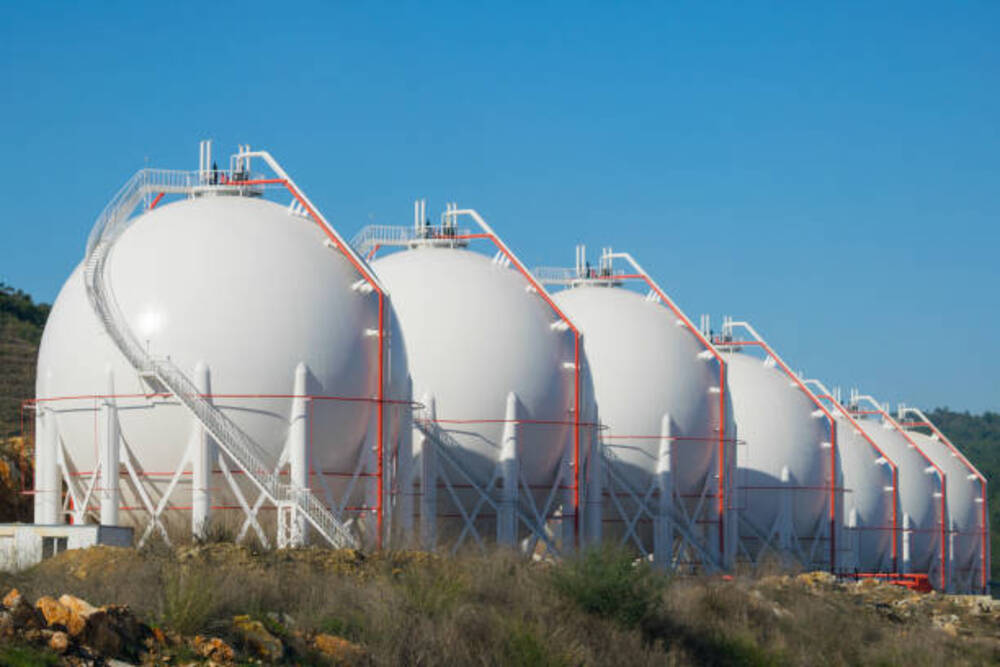Europe emerges from a mild winter with gas storage near record levels. But it must prepare for another pricey race to tank energy sources on the global market. Europe faces another LNG race while renewables still cannot cover the majority of industry and household needs.
Alas, even when fully occupied, the 100 bcm of storage space available in Europe can only supply around a fourth of the continent’s needs.
In contrast to the EU agreement last year for a voluntary reduction of 15%, think tank Bruegel, which provides analysis to EU officials, has proposed for a 13% demand restriction this summer.
That might be challenging given that there is less incentive to avoid using fuel now that gas prices have declined this year. Increased usage of coal, which was more affordable but harmful for carbon emissions, was one of the reasons for less gas use in the previous year.
The solution for the LNG shortfalls must be renewables
Gas is beginning to compete with coal in the power sector, according to James Waddell, head of European Gas and worldwide LNG at Energy Aspects, and other industries that went from coal to alternative fuels to gas may potentially switch back.
Gas returning to the industrial sector is expectable if the current pricing is somewhere below 60 euros/MWh and it drops to 40 euros/MWh, Waddell adds.
Also, as output increases to roughly 310 Terwatt-hours (TWh) from 280 TWh last year, more French nuclear production will benefit Europe’s overall situation, according to him.
However, he noted that it was still below the five-year average and that losses elsewhere, particularly in Germany, would reduce the gain.
According to industry analysts, the EU must eventually use more renewable energy in order to meet its objective of having no net greenhouse gas emissions by the year 2050. The energy crisis will hasten this process.
Full LNG tanks are no guarantee if the weather is not favorable
Helge Haugane, head of gas and power trading at Equinor, stated that up until that point when we can count on renewables, even full gas storages are not a guarantee. Equinor is the largest gas supplier in Europe now.
Haugane asserted that the market would be extremely susceptible to any disruptions or weather catastrophes as long as global supply remained low. We must remember that gas storages were 96% full at their peak in November of last year thanks to a herculean EU effort.
According to data from Gas Infrastructure Europe (GIE), they have fallen to 64%. By the end of the formal heating season, on March 31, analysts predict a further decline to roughly 55%.
After a mild winter and lower consumption, levels have remained stable. This has caused the IEA to cut its prediction for the EU gas shortfall.
We saved, but what if…
GIE estimated the supply-demand gap earlier this month at 40 bcm for this year, down from its earlier prediction of 57 bcm.
It stated that rapid deployment of renewable energy sources and heat pumps might help close 37 bcm of that gap in 2023, but it also issued a caution about an exceptionally wide variety of exogenous risk factors and uncertainties.
These include the potential for a complete shutdown of Russian gas through the pipelines that are still feeding Europe and a recovery in China’s demand following the lockout that may raise competition on the global LNG market and make it more difficult for Europe to purchase there.
In addition to an additional 55 bcm in 2022, the IEA predicted that European LNG imports may contribute an additional 11 to 140 bcm this year.
Germany is a major gas spender but also invests a lot
Prior to the war in Ukraine last year, Germany was one of Russia’s most steadfast gas consumers. But it lacked the ability to import LNG. It is putting online six floating storage and regasification units (FSRUs) before the end of this year at a record-breaking rate.
In order to liquefy and ship LNG, the industry claims that there needs to be an increase in terminals. However, Luke Cottell, senior analyst at Timera Energy consultancy, claimed that due to the strong worldwide demand, this will be challenging to do over the next 24 months.
While green politicians and environmentalists protest the amount of money being spent on infrastructure that should be obsolete in a low-carbon economy, other European nations are also expanding their LNG capacity.
The demand for heat pumps, which don’t use fossil fuels to heat buildings, has also been strongest in Germany, though gas-based systems still out-installed them last year.

